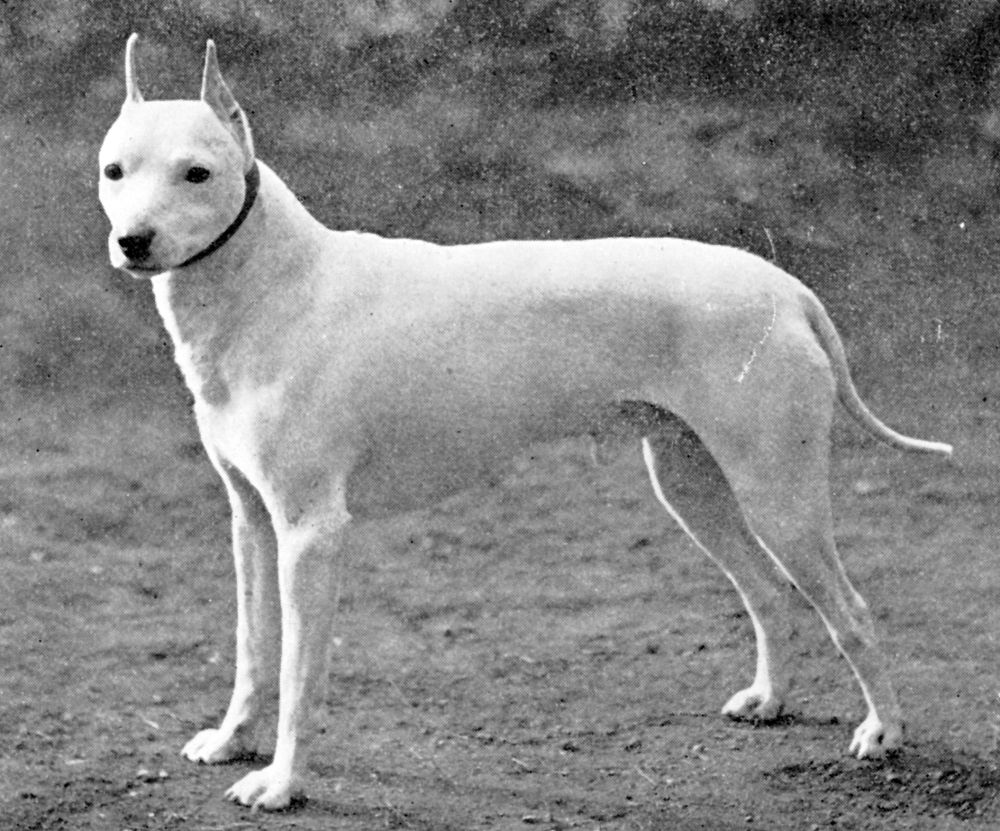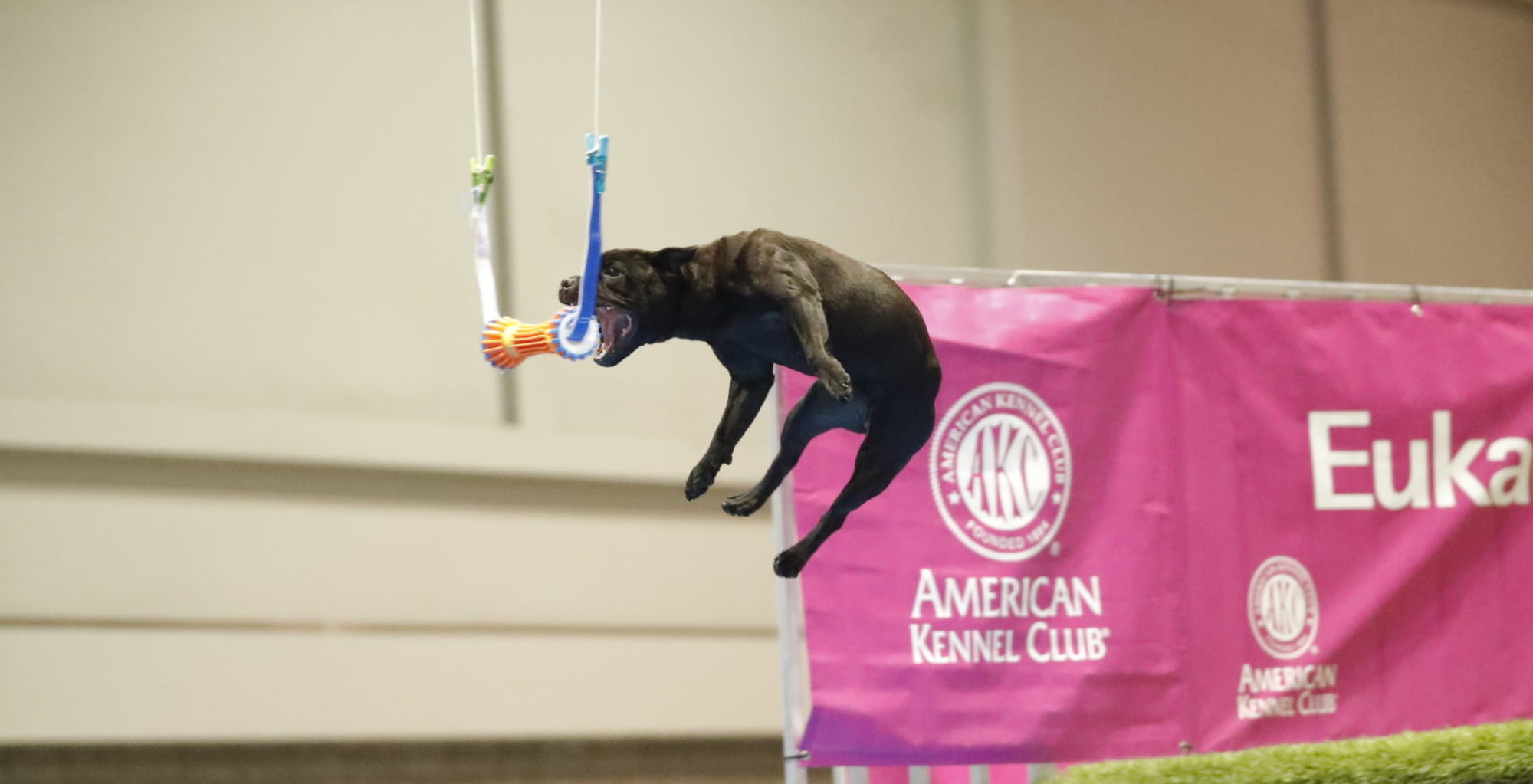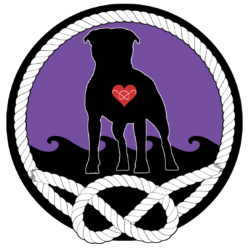Part two
The first thing a Stafford judge should do upon entering the ring is to have a quick overall look at the dogs in their ring. On first observation, which ones exhibit breed type – ie look like a Stafford, have the classic balanced athletic Stafford outline. Which ones have the Stafford temperament, ie bold and fearless, exuberant and not fearful. Which ones have the structural nuances our Standard calls for, ie in proportion the length of back shows equal distance from withers to tailset and withers to ground (not forechest to sacrum), shows great strength for its size and, although muscular, active and agile and not bunchy or heavy. Which are clean in outline, ie lacking wrinkle or fleshiness. Which are light in the loin, ie not thick and cloddy. Which have enough bone and substance, ie not racy or overdone. Balance is what you are seeking on first glance. Remember in all of the descriptions in our Standard to keep moderation and balance in mind. No extremes, no exaggerations. At all.
Now, within those entries which also offer correct basic canine structure outside of what the Standard calls for. You have already decided which follow the Standard structurally, now go back to your training and see which also have flowing parts without exaggeration. You want to see no looseness at shoulder or elbow, no roached backlines, no sloping croups, you want to see tight feet, no weakness at pastern and those front feet should turn out slightly and not toe in. You do not want to see cathedral or chippendale fronts. You do not want to see straight rears, or over angled rears nor slipping hocks. You do not want any exaggeration.
Now let’s look at movement. Remembering the blend which made up this original bull and Terrier you want to see no wasted energy on the move. Free, powerful and agile with economy of effort. You are looking for parallel movement coming and going. This means in either direction you should not see the other set of legs, it does not mean at a faster gait the legs cannot converge but this should be equal and kept at a minimum. The Stafford is not shown running, but at the gait which the exhibit moves freely with ease. Look for that perceptible drive when the dog moves away from you. Rear drive strongly propelling the dog forward with ease is what discernible drive means. You want to see the pads on those rear feet as the Stafford moves away from you. You want that front footfall to land below the nose when possible. As well, the withers shouldn’t dip below the backline on the move, nor should it show any wrinkle behind them. There is no rolling, choppiness or flip flopping at all. The blend was a bulldog resembling more of an athletic American Bulldog type, not a rolling cloddy British Bulldog. The Terrier resembled the Manchester therefore keeping the athleticism, enthusiasm and alertness.
Now you can begin to look at the details. Begin with the head, as in the old point system this was given 25 of the possible 100 points available and end with the tail which only was assigned 5 points. The head should have distinct cheek bumps, strong underjaw, tight lips, open nostrils, small thin tightly folded ears (or half prick, not 3/4), medium dark round eyes set looking forward, not almond or light (red or brindle dogs may have a lighter brown eye color but dark is preferred and never should eyes be yellow, gray or blue). The muzzle depth should be approximately one half the total head depth. (measure from underjaw/neck to occiput/topskull). The muzzle should be slightly blunt and square rather than an elongated point. The topskull is not to be exaggerated in height. The stop, while called for distinct, is meant to distinguish it from other Terriers such as the Fox or Bull Terriers, not a 90º angle and is in proportion to the head planes which should be approximately parallel to the muzzle plane. Remember, the stop is not the eye socket – you must get your thumb on it to feel the angle. Do not rely on visually looking at profile.
Keep in mind the health and original function of the Stafford also means the muzzle length should remain at approximately 1/3 the length of the skull length. No less, but can be slightly more. Listen for loud breathing, gasping if you see a Stafford with a very short muzzle or wrinkles. This could indicate breathing issues which we do not want to perpetuate in the breed (see post on BOAS from 31 Dec 2022). The Stafford is an athletic dog who should have no breathing issues in a show ring. Panting of course is normal, especially at outdoor shows or in humidity but never gasping, thick curled tongue or wheezing. As well, keep in mind in its original function, some Staffords may be overly excited in the ring showing some spiciness and challenge tails. This is totally normal as it would be in most Terrier rings but should never show any aggression towards people. Other dogs, possibly but kept in check, mostly quiet, alert and controllable. .
Examining the bite of the Stafford asks for a scissor bite in which the outer side of the lower incisors touches the inner side of the upper incisors. Only badly undershot or overshot bite is a serious fault. Simply part the lips to inspect. Look for large teeth and canines which do not press into the gums or the roof of the mouth. Look for dark pigment on the gums. The lips should be tight and clean.
The Stafford is not stuffy but rather clean, well muscled and hard to the touch but not a heavyweight. More of a middleweight. Strong for its size but not exaggerated. Do not forget, this is not a Bulldog nor is it a Whippet. The name explains the breed.
The rest of the Standard is very clear and probably most judges will understand it. The points made here are more nuances which those of us who have a passion for and who have studied the breed may find of importance and therefore may need further explanation. As well, upon observation, the points made in this article seem to be getting overlooked in the conformation ring and are of great importance. If you are seeking mentorship in this breed there are numerous resources available. The Stafford Knot website offers an illustrated Breed Standard as does the parent club, SBTCA. There are club approved mentors who would be happy to further explain some of the points made here or answer any questions.
Thankfully, we are mostly an owner or breeder handled breed and we are very down to earth and approachable. The owner handled Stafford seems to be changing rapidly for some reason, where more professional handlers have the breed which is unnecessary as the Stafford is very easily trained and is a wash-n-go breed requiring little grooming. People do sometimes hire handlers for different reasons, but this should remain a blue collar working mans breed as it was originally. The Stafford shouldn’t require a handler in order to be recognized in the conformation ring if it is correct. Come find a breeder or owner at a show, visit a Specialty show or send an email if you have any questions.
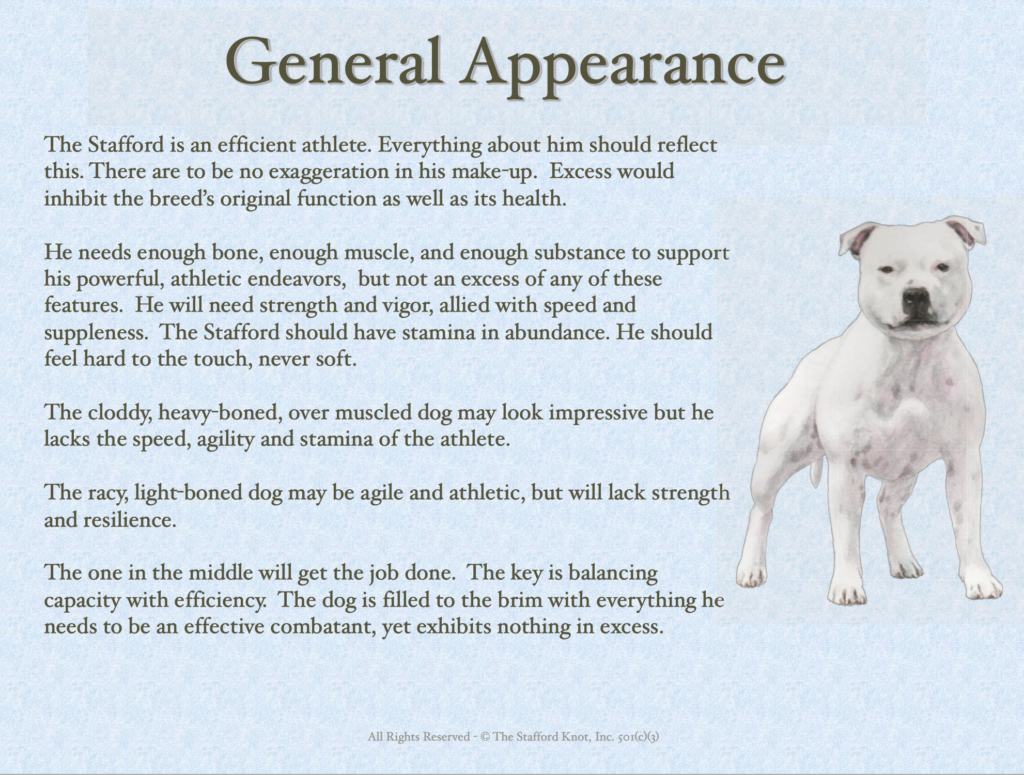
The Staffordshire Bull Terrier – Interpretation & Illustration of the Written Breed Standard –
A Comparative Discussion – UK & USA
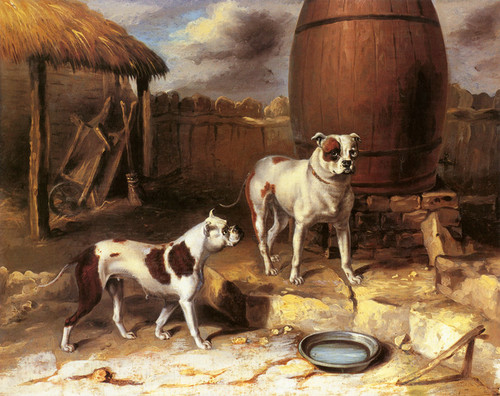
These two are what the Bulldogs which make up the Stafford looked like
